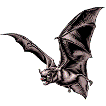Museum, University of Nebraska State

University of Nebraska State Museum: Mammalogy Papers
Document Type
Article
Date of this Version
1-1-2006
Citation
ALCES (2006) 42: 115-131.
Abstract
Dispersal is a basic feature of the natural history of moose. Most information about moose dispersal pertains to short-distance movements because long-distance movements are uncommon and difficult to observe. Since the 1950s, moose populations have been increasing in Minnesota and North Dakota. This may have contributed to several long-distance dispersal events for moose that recently were reported in the central United States. These dispersal events provide an opportunity to investigate both the causes and the biological implications of this rare phenomenon. Herein, we review long-distance dispersal events based on information obtained from a variety of sources. Dispersal routes that could be measured included two with minimal distances of 1,511 and 367 km, plus several others that were shorter. These dispersal events and recent evidence of moose reproducing outside the current range of the species could be the result of increasing population trends of moose in the central United States. We suggest that the dispersing moose are founder individuals that are dispersing naturally from established populations in search of suitable habitats and mates in areas to the south. We hypothesize that this type of geographic range expansion is similar to that of moose when they dispersed across North America during the early Holocene. As moose continue to move south, wildlife managers should be aware of habitats within their respective states that might sustain populations of moose.


Comments
Copyright © 2006, ALCES. Used by permission.